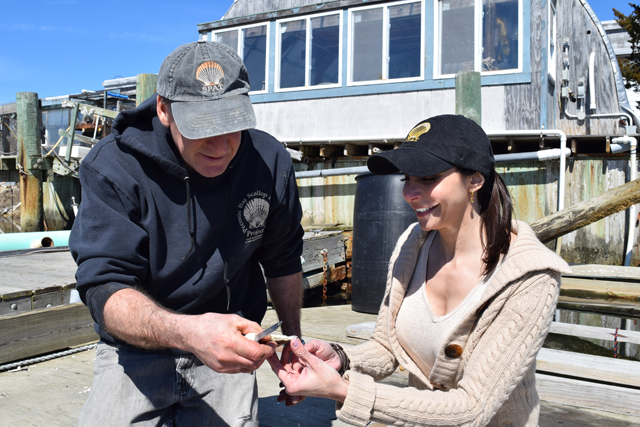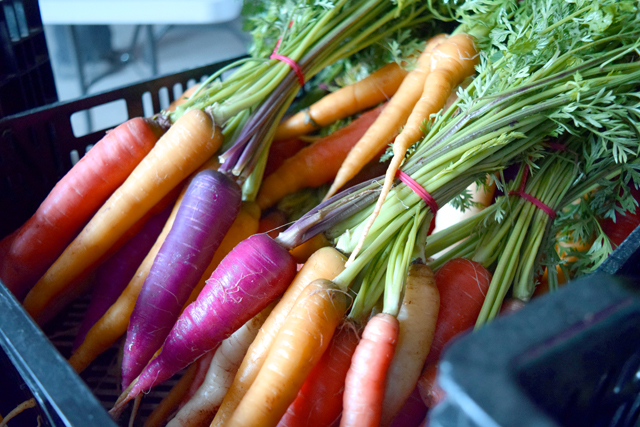
Kim Tetrault and Sheri Winter Clarry enjoy a fresh oyster. (Credit: Vera Chinese)
SPAT tricks oysters into thinking it’s sexy time: The Spin
Spring fever equals mating season. Or is it really that simple?
In this week’s edition of The Spin, I visited with Kim Tetrault, the head of Cornell Cooperative Extension’s Southold Project in Aquaculture. The program teaches volunteer members how to raise their own oysters and helps restore the bivalves in the bays, ensuring that commercial, as well as recreational harvesting, can continue for many years to come.
And oysters naturally filter up to 50 gallons of water a day, so this program is an important part of our water culture!
The best part? You get to eat what you grow.
We toured the hatchery located at Cornell’s facility near Cedar Beach on Wednesday.
Kim showed me the ropes of helping to entice the oyster population to spawn. Basically, they trick them into thinking its spring by keeping them in heated tanks. They dim the lights, play some Barry White and, well, you get the picture.
He also showed me the proper way to shuck an oyster. They were so fresh, there was no need for cocktail sauce.
To learn more about the SPAT program, visit them online at http://ccesuffolk.org/marine/aquaculture/spat-program.
See the video from my fun visit below.
[/fusion_builder_column][/fusion_builder_row][/fusion_builder_container]









